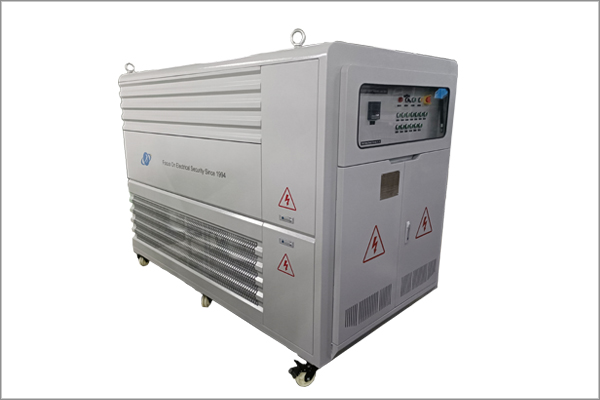Future Development Trends of AC Load Banks
Time:2025-11-15
Driven by the global energy transition and the wave of intelligence, the AC load bank, as the "dynamic examiner" of the power system, is upgrading from a traditional testing device to a core component of smart energy, presenting a clear development trajectory of intelligence, energy conservation and diversified scenarios.
Intelligent upgrading has become the core driving force. Relying on AI algorithms and digital twin technology, AC load banks are making a leap from "passive testing" to "active prediction". Through vector control and model prediction algorithms, the new generation of products can independently adjust active and reactive components, with the dynamic response speed shortened to the 5ms level and the current tracking error less than 1%. In the future, adaptive learning functions will be further popularized. Devices will be able to automatically identify the characteristics of the objects under test, generate the most stringent test waveforms, and in combination with 5G remote monitoring, achieve cross-regional collaborative testing, significantly improving detection efficiency.
The energy-saving transformation echoes the dual carbon goals. The energy utilization rate of traditional load banks is less than 40%, but the breakthrough of feedback technology has changed this situation. The new product adopting bidirectional conversion technology can feed back over 95% of the test energy consumption to the power grid, and the annual electricity savings of a single device can reach 120,000 kilowatt-hours. Meanwhile, the application of wide bandgap semiconductor materials such as SiC and GaN not only enhances power density but also improves energy efficiency by more than 20%. Coupled with innovative technologies like graphene heat dissipation coatings, it promotes the comprehensive evolution of products towards green and low-carbon.
The application scenarios continue to expand into new fields. In the field of new energy, AC load banks have become core equipment for testing photovoltaic storage systems and ultra-fast charging piles, simulating complex working conditions such as photovoltaic power fluctuations and voltage drops. In the future, with the explosive demand in emerging scenarios such as hydrogen electrolyzers and ship power systems, specialized products will rise rapidly. For instance, the market size of special load banks that are resistant to salt spray and have a wide temperature range is expected to exceed 1.5 billion US dollars by 2030. In addition, the popularization of modular design will support flexible power configuration ranging from 30kW to 10MW, adapting to diverse demands from data centers to microgrids.
News Recommendation
-
 2024-09-11
2024-09-11TRIUMPH LOAD EXHIBITING AT Enlit Europe 2024 -BOOTH 7.H08
-
 2023-04-21
2023-04-21TRIUMPH LOAD EXHIBITING AT DATA CENTER WORLD GERMANY 2023-BOOTH F909
-
 2023-04-06
2023-04-06TRIUMPH LOAD EXHIBITING AT ELECTRIC POWER TECH KOREA 2023 – Booth G109
-
 2022-05-05
2022-05-05What is the role of ac load bank for power supply?
-
 2022-05-05
2022-05-05What is the role of the load bank?


